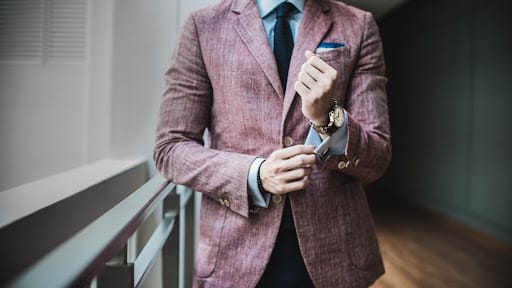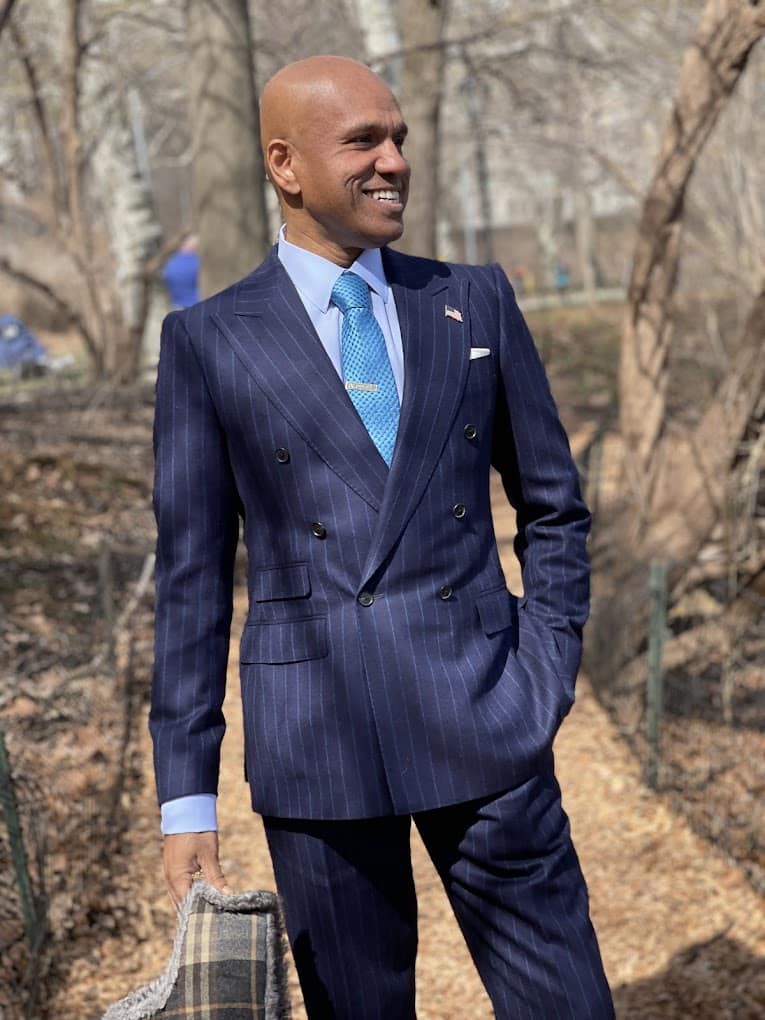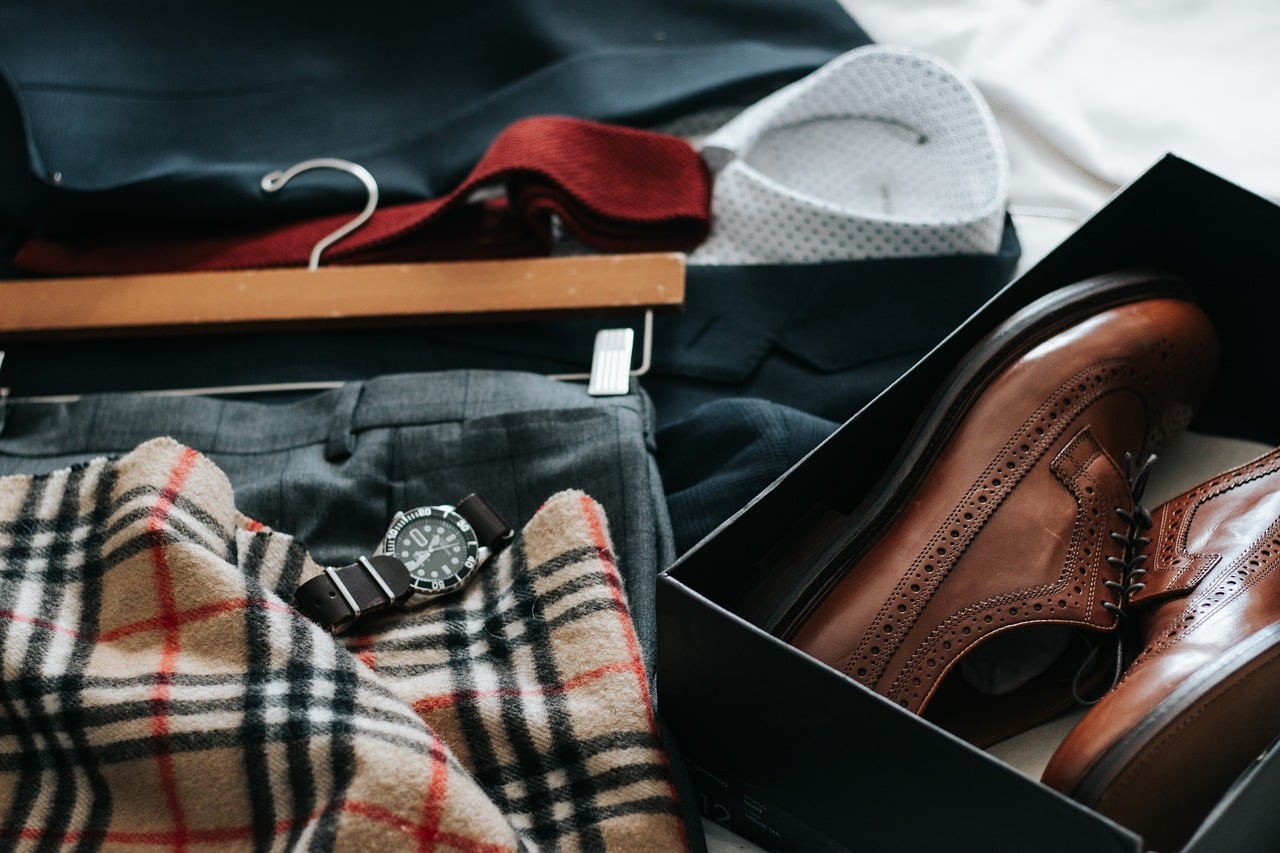Many people look for custom suits and shirts when they are preparing for job interviews, have a similar career advancement meeting, or want to stand out in networking circles.
However, what they don’t realise is that the color of their clothing choices can leave a lasting impression. For these scenarios, it helps to know what you might be unintentionally conveying about yourself through the color of your suit.
The same basic ideas hold true in any scenario, helping you visually convey a certain message at an important milestone, in a romantic setting, or at any other key event.

Why should you care about first impressions?
They are tremendously powerful, according to scientific research. A 2011 study on first impressions by Bertram Gawronski et al. found that without a change in context, a first impression would persist despite contradictory information attained thereafter.
In other words, first impressions are strong to the point that they are almost rigid. Since those initial readings of you are so difficult to change, anything you can do to improve them could be considered an investment in the ongoing way that you are perceived and treated.
Related: “A Suit for Every Season: Style Advice for Men’s Color Choice”
How does the color of your suit affect first impressions?
Whilst a bespoke suit is ideal for the fit of your suit, the choice of color is often a more difficult one. Color creates certain long-term subconscious cues in others as to how they should regard us. These impressions are impacted beyond the level of individual psychology to social psychology, where certain hues are associated with people that we have seen in powerful positions or in leadership contexts.
Survey: Traditional colors fare best.
When you are looking for a job in a competitive market, it helps to know the perspective of those who could fast-track your application: human resources and hiring executives.
When CareerBuilder polled 2,099 of these professionals, they found that the #1 worst color you could wear to an interview was orange – which certainly is an unconventional color in a business setting in the United States. Blue and black, meanwhile, were considered the strongest choices.
What is the best colour to wear for a first impression?
Based on the survey conducted, it would seem that for a first impression in a business environment wearing black or blue is the least likely to offend, and most likely to garner a positive subconscious response.
However, different colours can project different messages, so it ultimately depends on how you want to be perceived (and which colors match you best).
First impression colors for suits and shirts
Here is what each of four common suit, coat, overcoat or dress shirt colors says about you, in terms of the qualities or values they suggest:
Leadership – Black
Black is powerful and aggressive. It sends a message that you are a leader or have control. Black is a key color in the fashion world that is often associated with stylishness.
Fashion writer Samantha Kemp suggests contrasting black with a bright tie or flash of color in a handkerchief. Black can be intimidating to those you meet, so be aware that it may not be easy for others to engage with you.
However, you can use it to underscore your prominence and to appear debonair or glamorous. Style writer Antonio Centeno cautions that black is a better choice for those with darker hair and darker complexions. For someone with fairer features and lighter hair, black can be overpowering.

Teamwork/collaboration – Blue
Blue conveys a sense that you have high self-esteem – that you believe in yourself. Research has shown that navy blue could ultimately be the strongest choice for a job-interview suit for this reason. Navy works well in an interview setting, says Kemp, because it comes across as professional and stable without having the dreariness that can be associated with black.
When you walk into an important interview or event wearing a blue interview suit, you suggest important market values such as seriousness, diligence, and detail-orientation. Similarly, Centeno notes that navy blue is “the de facto color” in the United States.

Logic – Gray
When you wear gray, you convey a sense of isolation or independence. That tone of separation can be positive or negative, depending how well you carry yourself when you wear it.
Gray is the color of self-sufficiency and the ability to formulate thoughts and plans without external assistance. In fact, Kemp sees gray as tied with blue for the best possible suit color – adding that both men’s and women’s suits will typically look better in darker and lighter shades, respectively.
Centeno suggests that charcoal grey can help make someone look more experienced and mature.

Reliability – Brown
Brown will give the sense that you are safe, dependable, and welcoming. Centeno notes that dark brown is typically not seen as formal. He adds that similar to black, dark brown is a great choice for those who have darker complexions and hair. In some cases, those with lighter features can wear the color successfully too.
Dark brown is typically seen as a bit of color within an otherwise more neutral outfit. A tan suit is sometimes worn in the summer and in warmer environments. This color of suit will work for someone who does not have strong contrast in their features. Since tan is so light, you will not risk overwhelming natural, neutral hues.

Alan David Custom Suits for Best First Impressions
Do you want to make an incredible first impression at a job interview or other important life event but can’t decide what the best colour to make a first impression is?
At Alan David Custom, our reputation is based on an uncompromising dedication to craftsmanship and personal services. See our First-Time Buyer’s Discount.
About the Author: Alan Horowitz
Alan Horowitz is the owner of Alan David Custom. Having grown up in the custom tailoring business, Alan values taking care of his clients and always going above and beyond to ensure 100% satisfaction. Alan David Custom has become the best custom tailor in New York City. Alan is a 4th generation tailor with an expertise in measuring and pattern-making.


